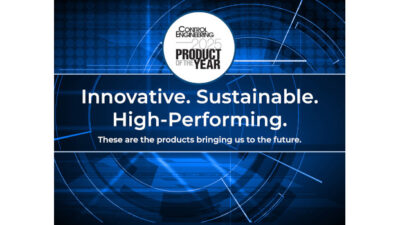Determining what type of level instrumentation is required for a specific application can sometimes be perplexing. This is particularly true when we consider process tank level versus inventory tank gauging.

There are many aspects of level measurement, ranging from point level indication to prevent overfilling a vessel, to extremely accurate measurements providing the kind of precision necessary for custody transfer. The instrumentation required for a specific application will vary depending on the measurement requirement. When we consider process tank level versus inventory tank gauging—which can also include custody transfer tank gauging-the instruments used for each measurement will be different. What is the difference between the two types of measurements and where is each used? This article will unpack those questions and provide some examples of where each is required.
Process tank level
In many applications only general inventory information or process control is required. These are typically applications in process industries where material in storage vessels is transferred on a regular basis (daily, weekly, or as needed) from one part of a facility to another, or as a batch process to create a final product. The product is used within one facility and does not change ownership. An example of this would be bulk raw materials that are used to produce a final product. Vessels used for these applications are generally fairly small. Sizes can range from several hundred to 40,000 gal or more.
Inventory is important for cost considerations and to ensure product is reordered in a timely manner. But, because the product is not changing ownership, the accuracy requirement is less stringent. The amount of product used in the process can be measured by a totalizing flowmeter or calculated from a change in tank level using a level transmitter. Typically, the accuracy requirement for a general inventory control application is ±1 in.
The most common level measurement devices used for general inventory control are standard free-air radar and guided-wave radar instruments. These products can offer accuracies down to several millimeters, which is sufficient for general inventory requirements. Outputs from these level transmitters can be linearized (Figure 1) to provide volumetric indication of the vessel’s contents. Additional compensation for temperature and density changes is typically not required for general process and control level devices.
Inventory tank gauging
In some applications, higher-accuracy measurements are required. These applications are typically for products where the level is not so important but the volume of the material in the vessel needs to be known for inventory purposes. Customers require a system referred to as automatic tank gauging (ATG) in the API (American Petroleum Institute) standards. Common products that require this higher accuracy are oils, fuels, edible oils, alcohols, some solvents, and juices. ATG systems will typically use process grade-level instruments but with additional augmentation to increase precision, such as temperature correction (spot or multipoint), along with a system providing built-in density correction tables. Temperature correction adjusts for thermal expansion of the product as this will affect the exact level of a given volume of product.
For example, for a tank diameter of 100 ft, a 1 C shift in temperature can expand or contract the level of a tank up to 0.1% of its actual level. In a 10 m tall tank, 0.1% means a change in level of 10 mm, or 78.6 barrels.
For inventory tank gauging applications, level, temperature, and sometimes pressure (for density calculations) measurement instruments are employed. Common technologies include radar, guided wave radar, and sometimes pressure measurement transmitters. These technologies can provide accuracy of ±2 to 3 mm and better.
The more accurate the level transmitter is, the better. Using the same tank size noted above, a 2 mm error in level is 15.7 barrels.
So if you add the discrepancy for thermal expansion to the discrepancy for transmitter accuracy, it is possible to have an error in the inventory value of several thousand dollars. For a tank farm with 20 tanks, this could be well over $100,000 of product discrepancy that must be accounted for.
Custody transfer tank gauging
Within this tank gauging segment are some applications for which extremely high accuracy measurements are required; these are characterized as custody transfer tank gauging. These applications are typically where products are being moved from location to location or changing ownership (custody is transferred from one party to another) and in applications where products are taxed by one or more government entities. Point-of-sale examples include oil and fuel terminals (LNG, NGL, LPG, jet fuel, crude oil, diesel, etc.), edible oil storage, and alcohol storage vessels. These are typically large-diameter tanks that have 40 to 120 ft. diameters and are 30 to 65 ft. tall and may contain hundreds of thousands to millions of gallons of product.
For these high accuracy requirements, custody transfer tank gauging systems are required. Standards for inventory tank gauging versus custody transfer tank gauging can be referenced in API chapter 3.1B titled "Tank Gauging—Standard Practice for Level Measurement of Liquid Hydrocarbons in Stationary Tanks by Automatic Tank Gauging." An error of a fraction of an inch can equal thousands of gallons of product and therefore thousands of dollars of inventory.
For custody transfer tank gauging applications, the most accurate level, temperature, and sometimes pressure (for density) measurement instruments are employed (Figure 2). Technologies include free-space radar and servo measurement transmitters. These technologies can provide accuracy of less than ±1 mm.
In both of the tank gauging applications illustrated (Figure 2 and 3), temperature compensation is required to adjust for level changes to the measured material due to thermal expansion. Depending on the application and required accuracy, the temperature transmitter may be a single point or may be multiple points spanning the range of the level measurement since a large tank may have a broad temperature profile from bottom to top. In some tanks there is stratification as product from different sources being added may not readily mix, and it is important that temperature is measured in the different layers. For temperature measurements, API Chapter 7 offers guidance for how to determine the proper spot or average measurement.
Along with accurate level and temperature measurements, some applications require compensation for changes in density. For these applications, a pressure transmitter is included to provide mass measurement of the vessel contents. The level instrument combined with a mass measurement can detect vessel deformation (bulging), characteristic of very large tanks due to hydrostatic pressure exerted on the vessel walls.
In many vessels it is also necessary to measure water accumulated in the bottom of the vessel, called waterbottom. Most of the accumulation comes from water that drops out of petroleum- and oil-based liquids, but also water that infiltrates through vents in the vessel and through the gaskets on floating roof tanks. The water separates and sinks to the bottom of the vessel and must be accounted for to reach an NSV (net standard volume) of the product in a vessel. One obvious reason for measuring the waterbottom is so only the desired product is measured and paid for in custody transfers, not the water. It is measured to allow deduction of the water from the NSV as part of the tank gauging system. Removing water is also done for maintenance reasons; that is, maintenance departments want to remove water on a regular basis to prevent rust on the tank floor, which can lead to leaks and resulting environmental hazards.
Waterbottoms are typically measured using a capacitance level transmitter (Figure 3). A capacitance transmitter uses the electrical differences between the high dielectric and conductive water and the low dielectric and nonconductive hydrocarbon to determine the interface. In most cases, the capacitance sensor is incorporated into the bottom of a temperature sensor or by using a servo gauge.
The data generated by one of these systems can be further utilized by an inventory management system (Figure 4). Along with the various field instruments, a complete inventory management system provides easy access to the data being collected. Outputs from the field devices are interfaced with a tank gauging gateway that does the volume and mass corrections, includes the API correction tables and strapping tables (TCT), and can provide data to a customer who only needs to use a browser for access.
There are also options for Microsoft Windows-based software, or even to bring the corrected measurements into a PLC or DCS. A gateway or software can provide the calculations to convert the data to volume or mass measurements to meet the requirements for weights and measures approved by agencies such as NMi and PTB. OIML and API make the recommendations on these practices and accuracies. The gateway or software can include a Web server, making data accessible from virtually any location.
Level measurements vary depending on the requirements of the application. For process tank levels, only a level transmitter is typically required as just the level measurement is utilized. When inventory or custody transfer tank gauging applications are being addressed, additional considerations such as temperature and pressure compensation and a tank gauging gateway or software are required to achieve the desired accuracy. The main difference here is that the mass or volume is required, not just the level value. Working with an instrumentation supplier that is knowledgeable in various technologies can suggest the equipment to meet your needs but not exceed your pocketbook. The end result is having the level or volume data your plant requires in the correct format and that will make your task easier.
Bill Sholette is level products business manager, and Brian Howsare is business development manager, inventory management solutions, for Endress+Hauser. Edited by Peter Welander, contributing content specialist, Control Engineering.
Key concepts:
- Measuring liquid level in tanks can involve multiple variables depending on the precision needed for a given application.
- Some specialized manufacturing environments have specific requirements for measuring methods.
ONLINE
For more information, visit:
Subscribe to the Control Engineering Process Instrumentation & Sensors eNewsletter



